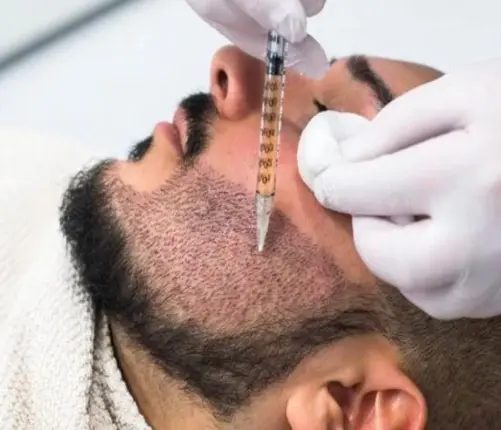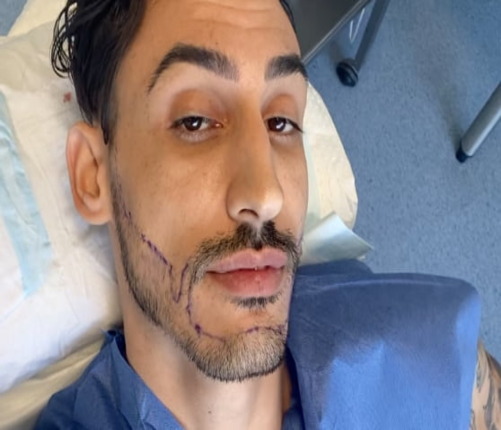A thick beard is considered one of the most attractive traits a man can have. Beard transplants offer the possibility to turn smooth baby faces into rugged landscapes of full facial hair.
- Operations
Real People, Real Results
A thick beard is considered one of the most attractive traits a man can have. Beard transplants offer the possibility to turn smooth baby faces into rugged landscapes of full facial hair.
Similar to other hair transplantation procedures, beard transplants entail extracting hair from a specific area of the body and then implanting it into cheeks or chin.

More than one billion men experience patchy or uneven beard growth at some stage in their lives. Annually, over 60,000 individuals worldwide opt for beard transplant procedures to address this issue
Turkey listed top 3 in the most visited countries from medical tourists with its accredited hospitals with the latest technology, quality and, affordable healthcare
The procedure is included in the Top 4 most popular cosmetic procedures with men, and its popularity is increasing
The physician evaluates the necessary follicle count to achieve the best results for your beard transplant. Comprehensive tests and consultations are conducted to assess your suitability for the procedure. Furthermore, the selection of the donor area for harvesting grafts is carefully determined.
Before the beard transplant procedure, your physician will provide detailed instructions. It is crucial to follow all recommendations closely to ensure a successful outcome.
Before extracting grafts, the hair in the donor area is trimmed. The number of grafts required for transplantation is calculated based on the size and shape of the target beard area.
Once all preparatory steps are completed, the front hairline is carefully designed to complement the patient's facial features. The transplantation process then begins using the appropriate method.
After the surgery, patients embark on a gradual journey towards achieving their desired outcome. The final result becomes evident approximately 12 months post-surgery. Achieving the intended result necessitates strict adherence to post-operative recovery guidelines.
By following instructions and medical advice diligently, patients can significantly enhance their chances of attaining their desired outcome.
Several methods and techniques exist for beard transplantation, but currently, two are experiencing the highest demand.
In FUE, individual hair follicles are harvested from the donor area (typically the back of the scalp) using a small punch tool. Each follicular unit contains one to four hairs and is carefully harvested to preserve its integrity.
These follicles are then meticulously transplanted into the recipient area on the face to create a fuller and more natural-looking beard. FUE is known for its minimally invasive nature, as it does not require the removal of a strip of skin, resulting in tiny, dot-like scars that are easily concealed by surrounding hair.
Patients typically experience minimal discomfort and a quicker recovery compared to FUT.
FUT, also known as the strip method, involves removing a small strip of skin from the donor area and dissecting it into individual follicular units under a microscope.
The prepared follicular units are transplanted into the recipient area on the face, similar to the FUE technique. While FUT can also be effective for beard transplants, it may result in a linear scar at the donor site, which can be more noticeable compared to the tiny puncture marks associated with FUE.
Recovery from FUT may take slightly longer compared to FUE due to the need for stitches and the healing of the donor area.
;The duration of the procedure may differ for each individual, but generally;
4-8 hours
Local Anesthesia
6-12 months
Voluminous Hair Appearance
FUE
Beard transplant procedures are suitable for individuals with patchy or uneven beard growth seeking fuller facial hair.
Candidates typically include those with genetic factors causing sparse growth, hormonal imbalances leading to hair loss, or scarring in the beard area.
Additionally, individuals aiming to enhance their facial aesthetics and achieve a more masculine appearance may consider beard transplants.
Candidates should have realistic expectations and be willing to follow post-operative care instructions.

Frequently Asked Questions
